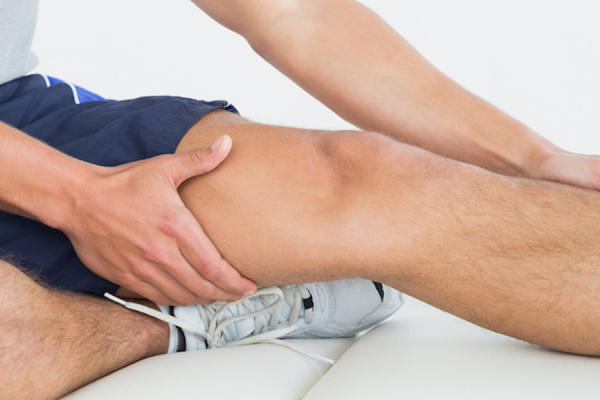Did you know that knee pain can result from conditions that you might not associate with your knee? People often seek orthopaedic consultation for knee pain, although not all knee pain requires surgery.
Knee pain is complex and can be the result of a number of factors involving surrounding joint dysfunction. We often associate knee injury with sports injury or overuse of the knee, but there are a number of reasons why you can experience knee pain. Your flexibility, joint mobility, strength and posture can cause poor joint mechanics resulting in knee problems. A holistic approach in physio assessment and treatment helps to determine possible causes of this condition.

4 common reasons for knee pain
1. Patellofemoral Pain Syndrome (PFPS)
PFPS happens for a number of reasons, including lack of flexibility, tight quadriceps and hip flexor muscles, and poor patellar tracking. Climbing stairs, running, kneeling, squatting and long-sitting are frequent aggravators of pain. The cause of PFPS is not always directly at the knee, therefore it is important to consider dysfunctions of surrounding muscles and joints around the knee.
Weak Hips
Weak hip abductors and external rotators can cause foot pronation, resulting in excessive strain of the medial structure of your knee. Women are prone to knee problems due to weaker hips and anatomical differences in bone structure (larger Q-angle). For this reason, it is important to strengthen your hips as part of a comprehensive treatment approach to relieving knee pain. Poor sitting posture involving crossed legs for prolonged sitting time can result in muscle imbalance of the hip, contributing to knee problems.
2. Restricted Ankle Dorsiflexion (Backward Flexion or Bending)
As with weak hips, if you excessively pronate (turn or hold your foot) so that your sole is facing downward or inward, you will tend to place your knee in an awkward position when moving around (known as tibial and femoral internal rotation). Muscle imbalances and excessive joint compression at the knee may cause PFPS symptoms.
Restriction of ankle movement alters the way you walk and therefore may cause knee pain. Muscle imbalance also changes the mechanics of knee movements during physical activity, resulting in pain.
When you stand upright, the interaction between your foot and the ground affects the rest of your body and carries up the kinetic chain. Your joints and segments affect one another during physical activity — when one is in motion, it creates a chain that affects movement in your joints and segments. What happens to your foot and ankle affects your knee, hip, lower back and can go as high as your shoulders and neck. Mobility restriction at the ankle causes a chain reaction that ripples throughout your body.
3. Lumbar Spine Pathology
Spinal stenosis, arthritis or disc herniation from L3-4 can cause pain down to your knee. Nerves at the base of your lumbar spine travel down to your knee, providing motor input and sensory output. Irritation of a nerve root in your lumbar spine can be the main cause of knee pain.
4. Restricted Movement of your Big Toe (Hallux Valgus or First MTP Joint Restriction)
Similar to the ankle, if your first toe cannot extend or dorsiflex, your foot will fall into more pronation through midstance to toe off (big toe finds its way to the ground by forcing the subtalar joint into pronation). This leads to restricted movement of your big toe and possibly PFPS.
If you are experiencing knee pain, we can help. Call Activa to schedule your appointment today: 613-744-4188.
